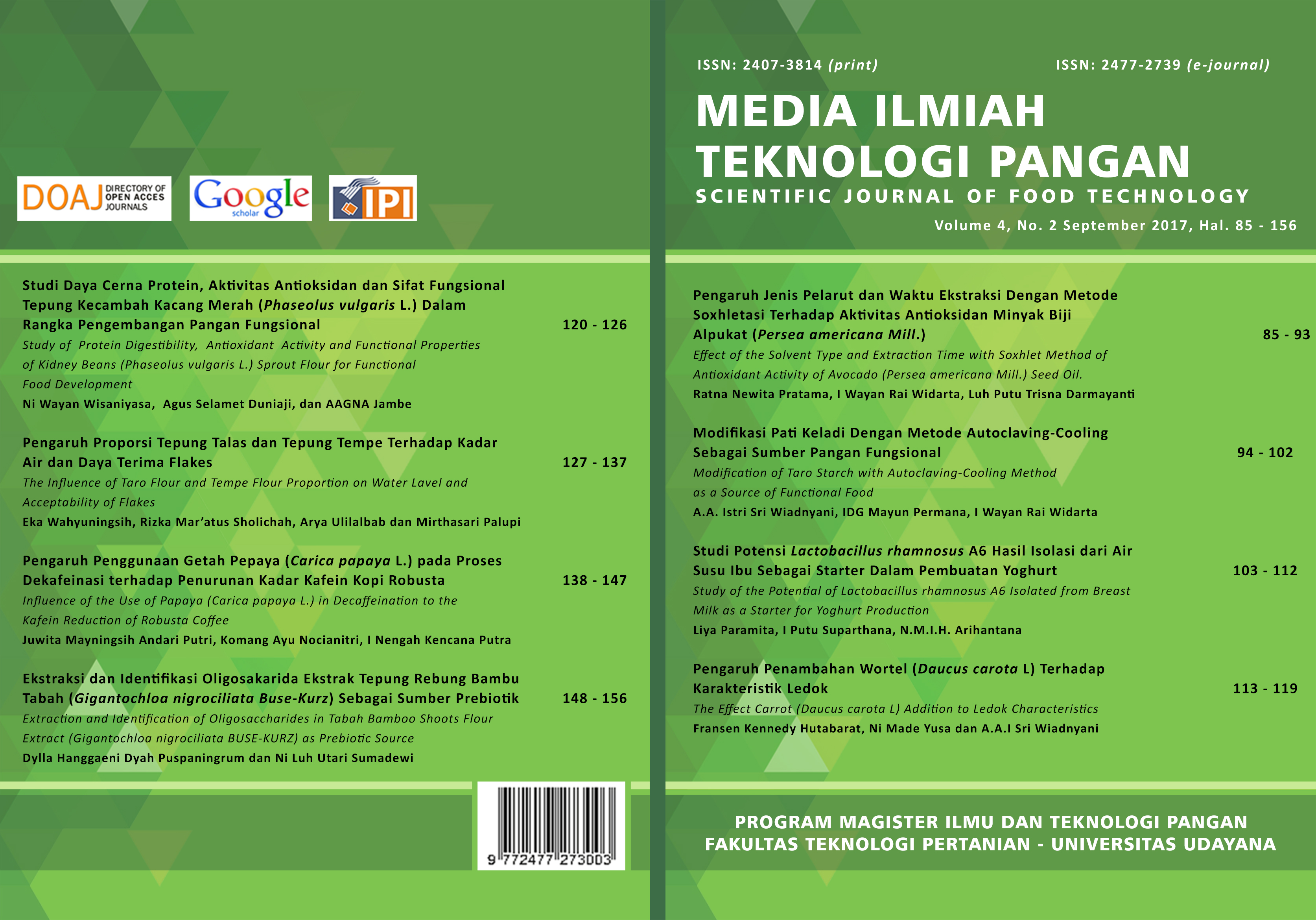Influence of the Use of Papaya (Carica papaya L.) in Decaffeination to the Kafein Reduction of Robusta Coffee
Abstract
Decaffeination is a process for reduction of caffeine content in coffee beans. This study is aimed to find out the effects of papaya’s sap (Carica papaya L.) addition on the caffeine content of robusta coffee and to know the concentration of papaya’s sap addition that could produce decaffeinated coffee according to the requirements. This study used a Completely Randomized Design (CRD), with five levels of papaya’s sap concentration namely 0%, 1.5%, 3%, 4.5%, and 6%, and 3 repetitions, so that obtained 15 experimental units. The results of the study showed that the use of papaya’s sap affected caffeine content of robusta coffee. Addition of 6% papaya’s sap produced decaffeinated coffee according to the requirements, with the caffeine content of 0.24%, moisture content of 11.34%, ash content of 0.07%, and protein content of 9.72%.








